Tag: Poster
-

CLIMATE ACTION PLANNING FOR THE CITY OF SHAMOKIN
In response to climate change, many local governments are supporting state and federal greenhouse gas(GHG) reduction targets with the development of their own plans for climate mitigation and adaptation to build their own resiliency. The Pennsylvania Department of Environmental Protection (DEP) has developed a program with ICLEI to aid local governments in this effort. For…
-

Homelessness Research and Awareness Project
The Homelessness Research and Awareness Project seeks to address the rising issue of homelessness within Shamokin, PA. This project is being completed at the request of The Faith Alliance for Revitalization, a coalition of nonprofits, businesses, volunteers, and government in the Shamokin area. The goal of the research project is to better understand the problem…
-

Effect of Nitrates on Algae Bloom Formation
One of the largest threats to aquatic ecosystems are harmful algae blooms (HABs) which are caused by excess levels of nutrients such as phosphorus and nitrogen. Agricultural runoff is a relevant issue in North East Pennsylvania (NEPA) and a leading source of phosphorus and nitrogen into waterbodies. Excess of nitrates in soils that are not…
-

The Influence of the Transport of PM 2.5 and Ozone on Lancaster County Air Quality
The collateral impact of emissions present in the atmosphere is exacerbated by the increased in ambient air temperatures. Utilizing the Environmental Protection Agency ‘s (EPA) outdoor air quality data from AirNow, we focus on the pollutants ozone and PM2.5 in Lancaster, Pennsylvania. This study is focused on days that recorded daily ozone and PM2.5 Air…
-

Nature’s Unifying Patterns: Sustainable Biomimicry
In fall 2020, I added a sustainability component to my elective course, BMEG 431: Biomimetic Materials. The Biomimicry Institute (biomimicry.org) defines biomimicry as “the practice of looking to nature for inspiration to solve design problems in a regenerative way.” The implication is that it is not enough to look to nature for design solutions to…
-
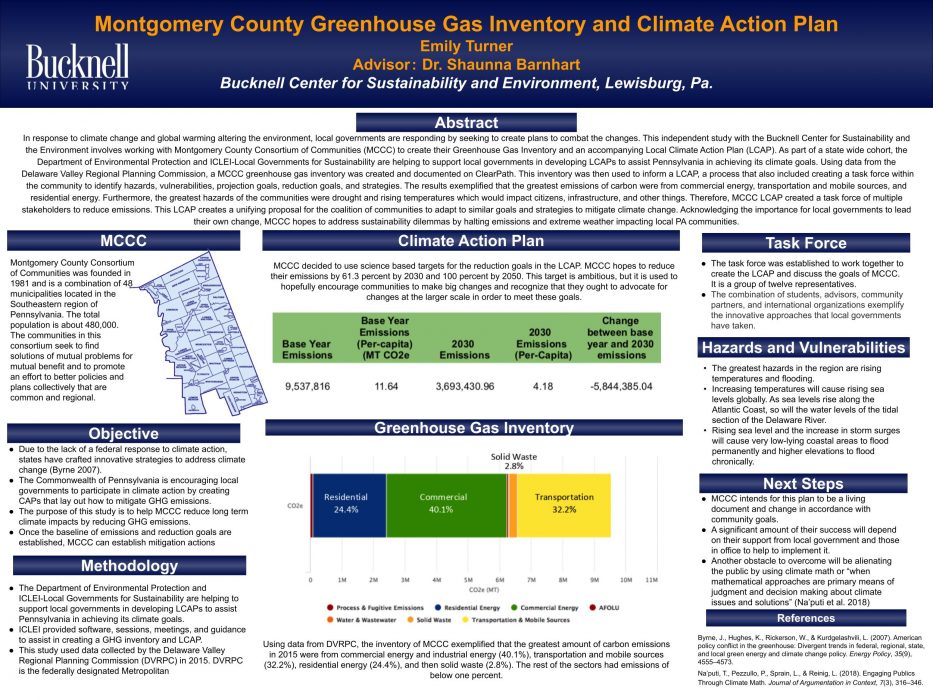
Montgomery County Greenhouse Gas Inventory and Climate Action Plan
In response to climate change and global warming altering the environment, local governments are responding by seeking to create plans to combat the changes. This independent study with the Bucknell Center for Sustainability and the Environment involves working with Montgomery County Consortium of Communities (MCCC) to create their Greenhouse Gas Inventory and an accompanying Local…
-
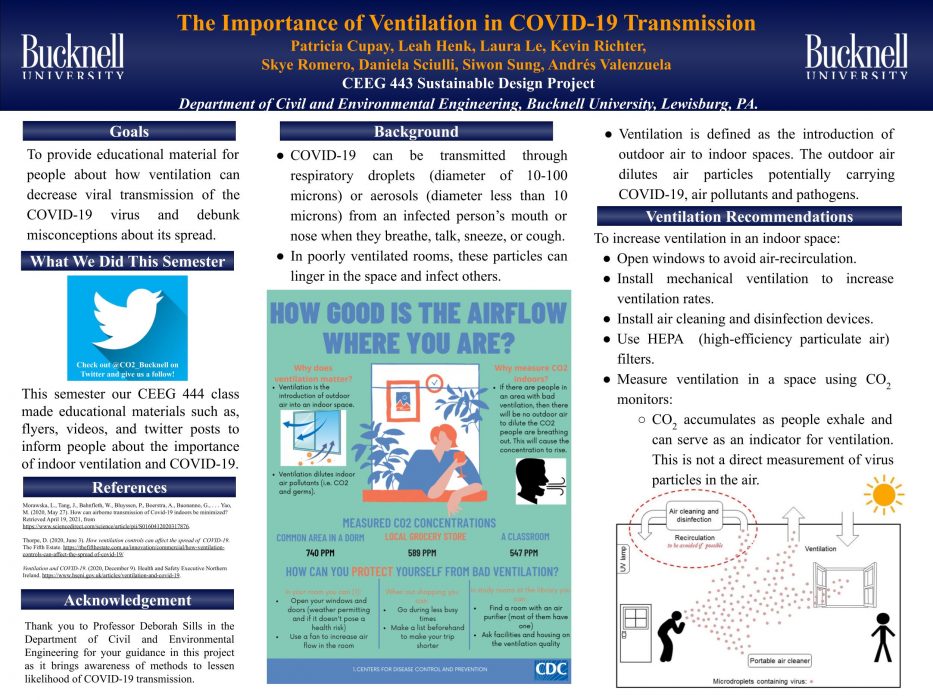
The Importance of Ventilation in COVID-19 Transmission
The COVID-19 virus has been a part of everyone’s lives for over a year but there are still many misconceptions about how the virus is transmitted. In this poster we will show educational materials we created that aim to clarify the main transmission method of the virus, which is through respiratory droplets and aerosols. Respiratory…
-
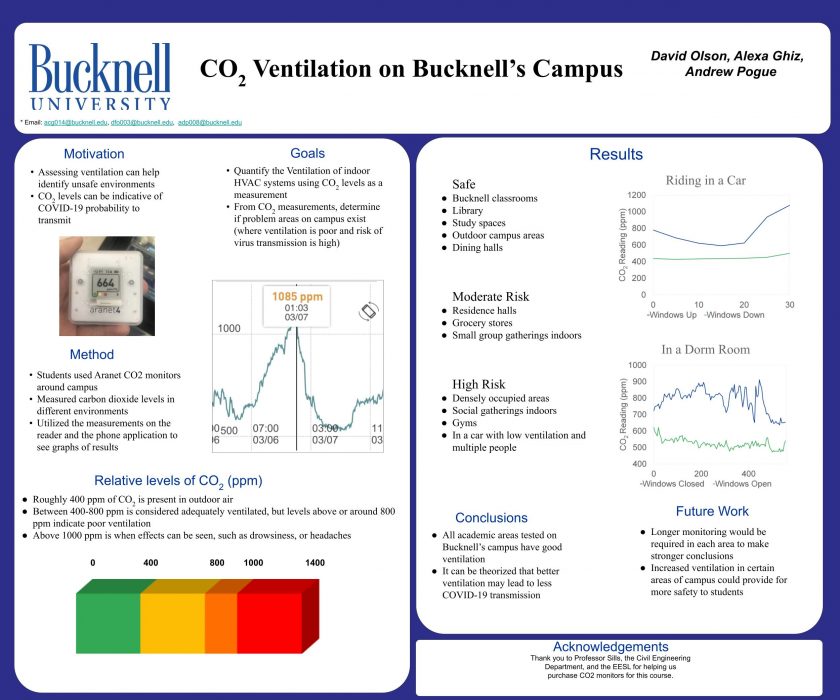
CO2 Ventilation On Bucknell’s Campus
Carbon dioxide monitors have been used by Professor Sills’ Sustainable Design course to provide information about CO2 levels in different environments on and off of Bucknell’s campus. Carbon dioxide levels can be representative of ventilation in a given area, but also should be examined with caution because they can be affected by other factors. Measuring…
-
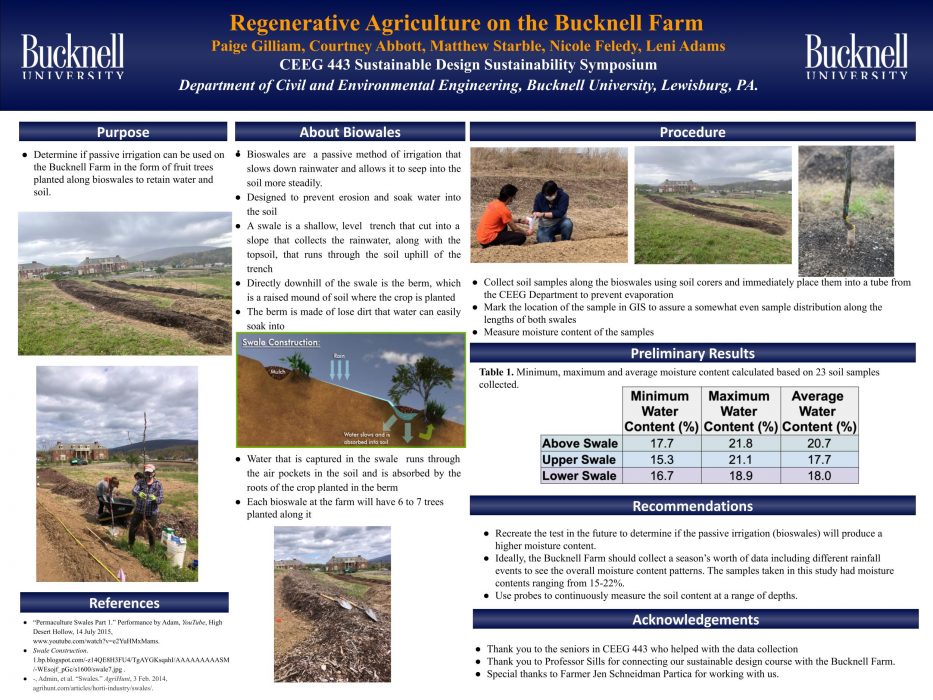
Regenerative Agriculture on the Bucknell Farm
The Bucknell Farm is planning on planting an orchard to cultivate various fruit trees. The proposed location of the fruit trees is on a slope. To prevent runoff of rainwater downslope, the Bucknell Farm would like to implement a form of passive irrigation. Passive irrigation uses water from the environment in contrast to active irrigation…
-
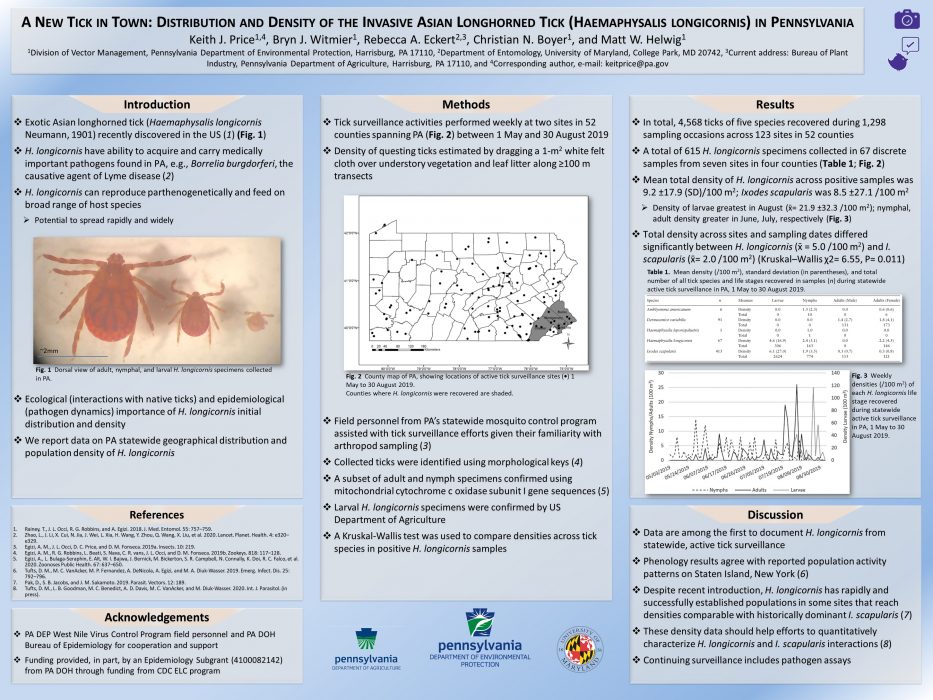
A New Tick in Town: Distribution and Density of the Invasive Asian Longhorned Tick (Haemaphysalis longicornis) in Pennsylvania
Since the recent introduction of the Asian longhorned tick (Haemaphysalis longicornis Neumann) in the United States, quantitative surveillance information remains lacking. We conducted statewide, active tick surveillance from May to August 2019 and report data on H. longicornis geographical distribution and population density in Pennsylvania. We collected 615 H. longicornis from four counties. Across samples…